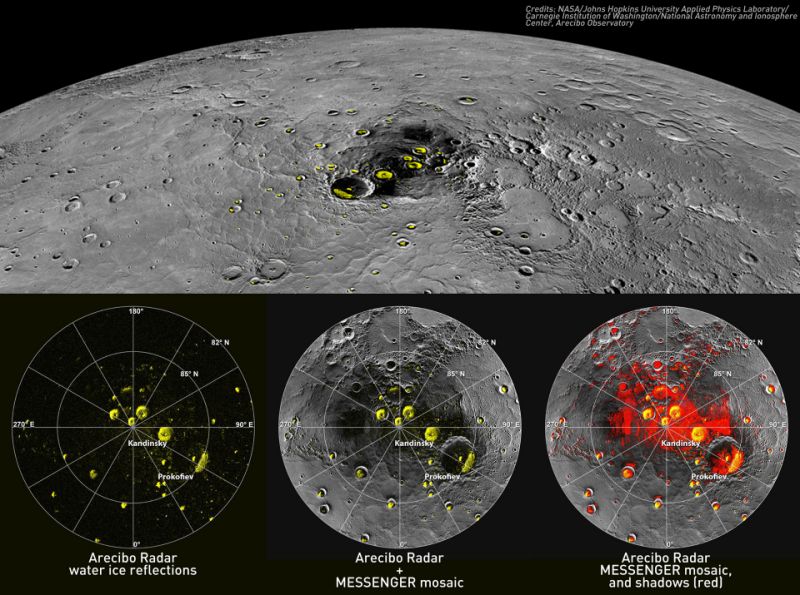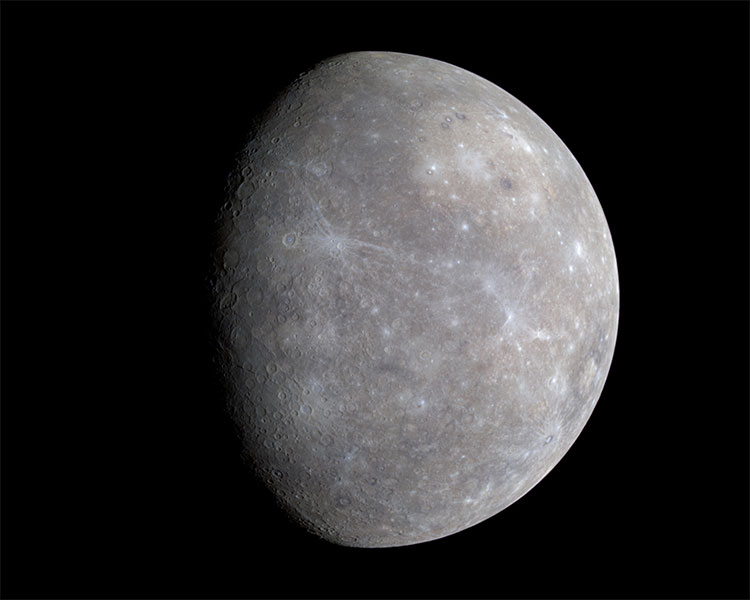Viewed from Earth, the planet appears with an orbital conjunction period of approximately 116 days, and is much faster than the other planets. This fast speed led the Romans to name the planet Mercurius, the god of communication and speedy messenger.

The images show that Mercury has ice
Georgia Institute of Technology
Mercury is one of four Earth-like planets in the Solar System, and is a rocky planet like Earth. It is the smallest planet in the solar system with an equatorial radius of 2,439.7 km.
Mercury’s daytime temperatures can reach 430 °C, falling to -200 °C at night. However, there are still places on the planet’s surface where sunlight never reaches.

Color image of Mercury taken by MESSENGER.
Earth scientists almost 10 years ago knew Mercury had ice at the poles, thanks to the 2011 observations of the MESSENGER spacecraft deployed by the US Space Agency (NASA).
However, it is not until new research from the Georgia Institute of Technology (USA) is published that we can solve the mystery behind the formation of ice on the surface of Mercury.

The geological map of Mercury has been drawn successfully
According to the new hypothesis, at least some of the ice was formed thanks to the planet’s extremely hot temperatures.It may sound strange, but the Georgia Institute of Technology team insists this is not a pipe dream, but has been observed dozens of times since the late 1960s.
In the report, the researchers used modeling to explore the mechanism of ice formation at Mercury’s poles, based on minerals found in the planet’s soil and a process known as recombinant desorption (RD). . In which, desorption is the phenomenon where a substance is released from the surface.Minerals in the soil contain metal oxides, and under the onslaught of protons from the solar wind, a number of other “products” emerge, including water.
In an anaerobic environment and under the influence of extreme heat, water molecules are released from the ground, diffuse and drift throughout Mercury.
If it falls into the permanent area of darkness at the poles, the water is likely to freeze, become ice and be permanently trapped in this place.
Source: Youth Newspaper








